There have been some great lectures about the Amazon that are especially interesting since we will be cruising 600 km up the river in the coming week or so. I have been keeping busy with my watercolor projects. The first comes from the buildings that face the dock in Rio de Janeiro. The graffiti and/or street art is very intriguing and I tried to capture it. The second project is a large shiny artwork of three people in Carnaval in Salvador. Carnaval is huge in Salvador attracting almost 4 million celebrants. Luckily, it was all over when we arrived. This is a museum. The statue caught Ron’s eye so we both took pictures.


One interesting thing… at 11:40 a.m. the other day, we were exactly under the sun. No shadow is cast. Obviously, this is neither Ron nor I. Ron asked a passerby to pose for the no-shadow shot.

At the end of one of the squares surrounded with shops, restaurants, the Post Office and a police station, there is a large and beautiful cathedral and monastery, dedicated to Saint Francis (São Francisco). The hallways and courtyards that make up the living quarters are lined with beautiful blue and white tile paintings brought from Portugal.

Inside the main portion of the cathedral the style is rococo and covered with more that a ton of 18 karat gold in the form of gold leaf. When the light hits all of the alcoves and altars, the effect is magnificent and inspiring rather than gaudy. My favorite statue is one of St. Francis helping Jesus off the cross. Apparently the artist had a vision that inspired the sculpture that he donated to the church.

The end of our tour took us into one of the restaurants on the courtyard. We were served a snack of local foods that were another example of the African influence in this region. We did not exactly know what we were eating, but it was delicious. There were hush puppy-like snacks, various sauces, a slimy okra-based dish, and my favorite, a combination of shrimp and coconut milk. Yum. We were served water (well-received after the hot tour in the city) and the Brazilian national drink, the caipirinha. We have been warned that this drink goes down easily and can deliver a big kick. My drink tasted great, but Ron thought his tasted more like rubbing alcohol with limes. We switched to beer.

As we enjoyed our food we were treated to an impressive demonstration of Capoeira which is a unique combination of dance and martial arts. Still photos do not do justice to the energy and skill these dancers demonstrated. The slaves were not allowed to practice martial arts, so they developed this “dance” to disguise the art. Drums added to the driving pace of the show.

Final thoughts. There is a traditional dish that Ron still wants to sample, called “feijoada” (fesh-wada). He learned about this from one of the visiting chefs. This is a black bean and meat stew-like dish. He plans to make it for Pot Luck when we return home. The last picture shows the square and the location of Michael Jackson’s picture and Our Lady of the Rosary of the Black Man’s church. You might also notice the police tent. We were warned about pickpockets in this city and to be very careful not to wear fancy jewelry or expensive watches. There was a significant police presence in these tourist-heavy regions which was nice. We have to be careful again in our next port of call, Fortaleza.


This city is farther up the east coast of South America than Búzios, but we are still in Brazil. In fact, we will be in Brazil for almost three weeks of this cruise. Salvador used to be the capital of Brazil long ago because of the extensive sugar trade that developed in the area. Sugar cane grows well in this area, but it’s cultivation requires many hands and the solution to the problem was slavery. This choice has affected everything in Salvador. The African heritage is visible in the skin tone of the people (most citizens of Brazil show characteristics of Portuguese heritage or of the indigenous peoples), the food, the music, the art and the religions.

When the sugar trade reduced in importance, other cities raised in importance such as Rio and later Brazilia. One of the important tourist areas is the historic region that is located high above the port. To get there, you take an elevator (for about 25 cents) to the area. The architecture is from the wealthy traders and plantation owners from days gone by. The buildings have a lot of detail and color.
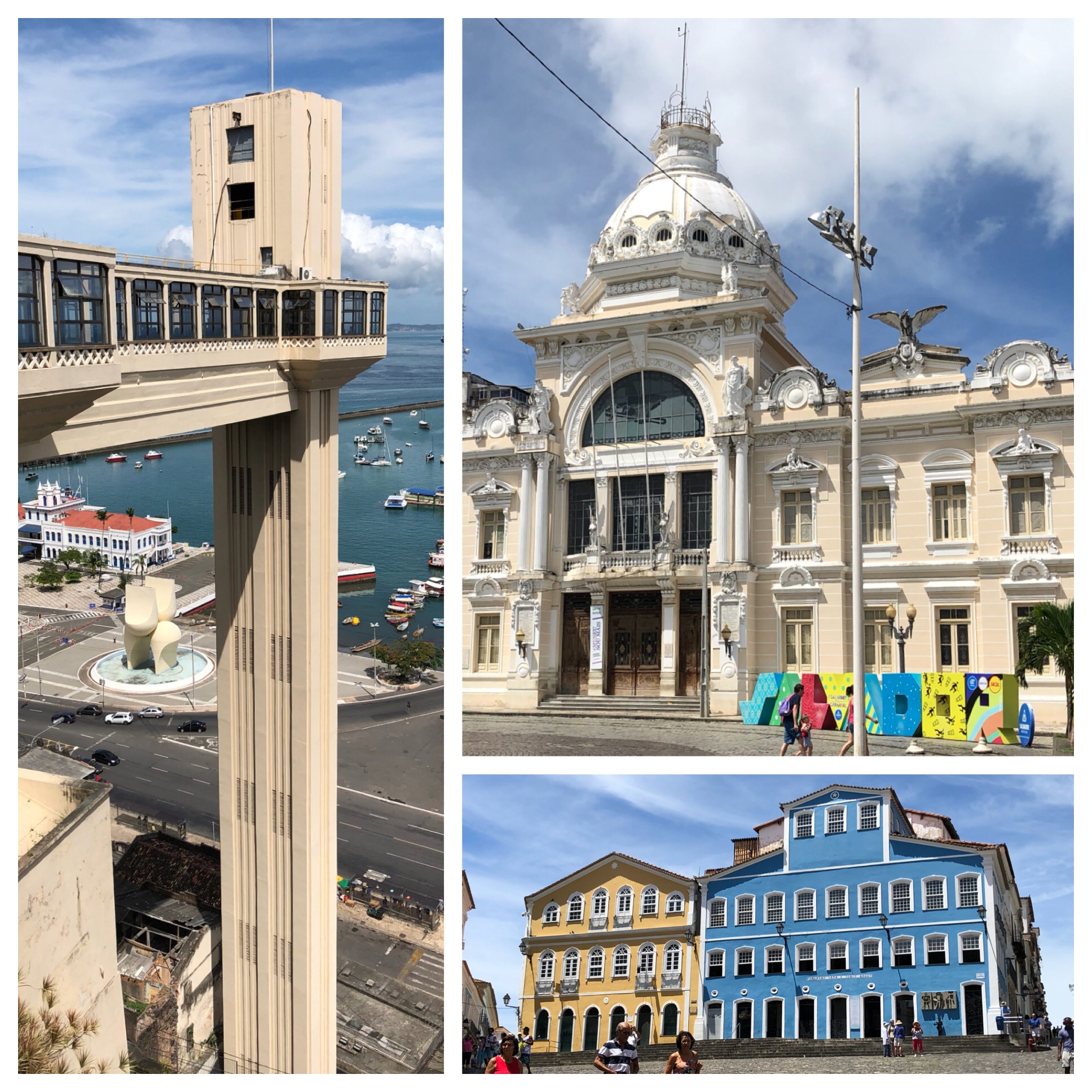
9
In the tourist area, we encountered Baianas, dressed in traditional outfits. These costumes were worn by the slave women who were chosen to work in their masters homes taking care of the children. We were able to take pictures for a small donation. The African religion was strictly forbidden during the period of slavery, but the people were able to continue their worship of their several African gods by disguising their gods with Christian saints images thus fooling their masters. Each god had a part of the earth associated with them (sea, air, corners, crossings, etc.) and also a color. The colors of the jewelry worn by the Baianas represented which gods they followed.

The slaves were eventually allowed to construct their own church. It is a pretty blue color with beige accents. Since the builders were slaves, they could only work on the church at night. Also, because the slaves were not allowed fire by their masters (who feared that the fire might be used as a weapon), the builders could only work during full moons. Not surprisingly, therefore, it took many years to build the church. This church is called Our Lady of the Rosary of the Black Man. We visited on Sunday during a service and it was not appropriate to take pictures, but I did notice a huge rosary that hung across the entrance of the church. Each “bead” was the size of a croquet ball.
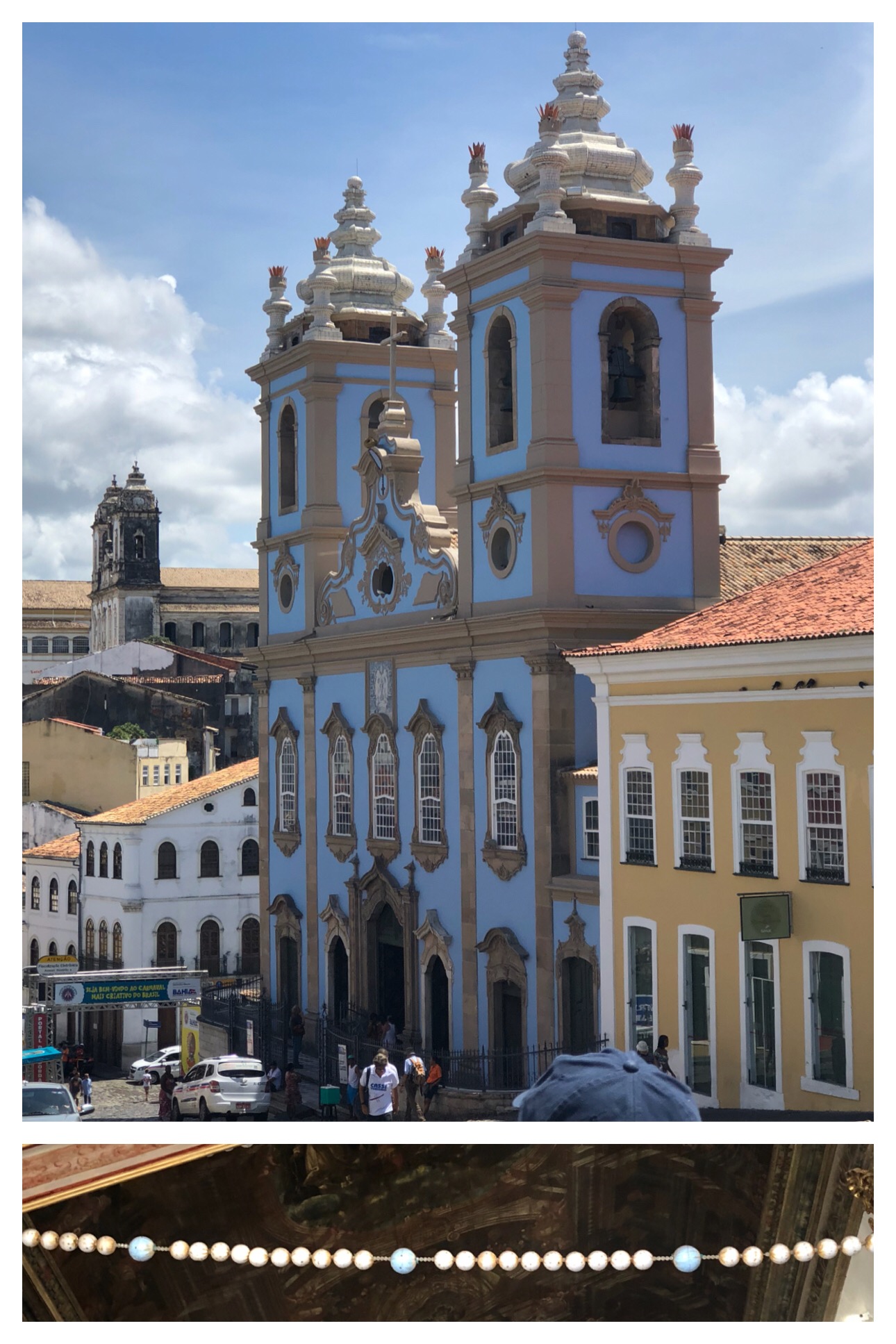
Continuing around the area we saw some interesting and unusual things. A large picture of Michael Jackson is displayed prominently on one blue building. Michael filmed a music video on the balcony as well as down the street called, “They Don’t Care About Us”. Lining the streets were many souvenir/gift shops with many tempting items to buy. The weather was very hot and humid, however, which dampens the mood to shop.
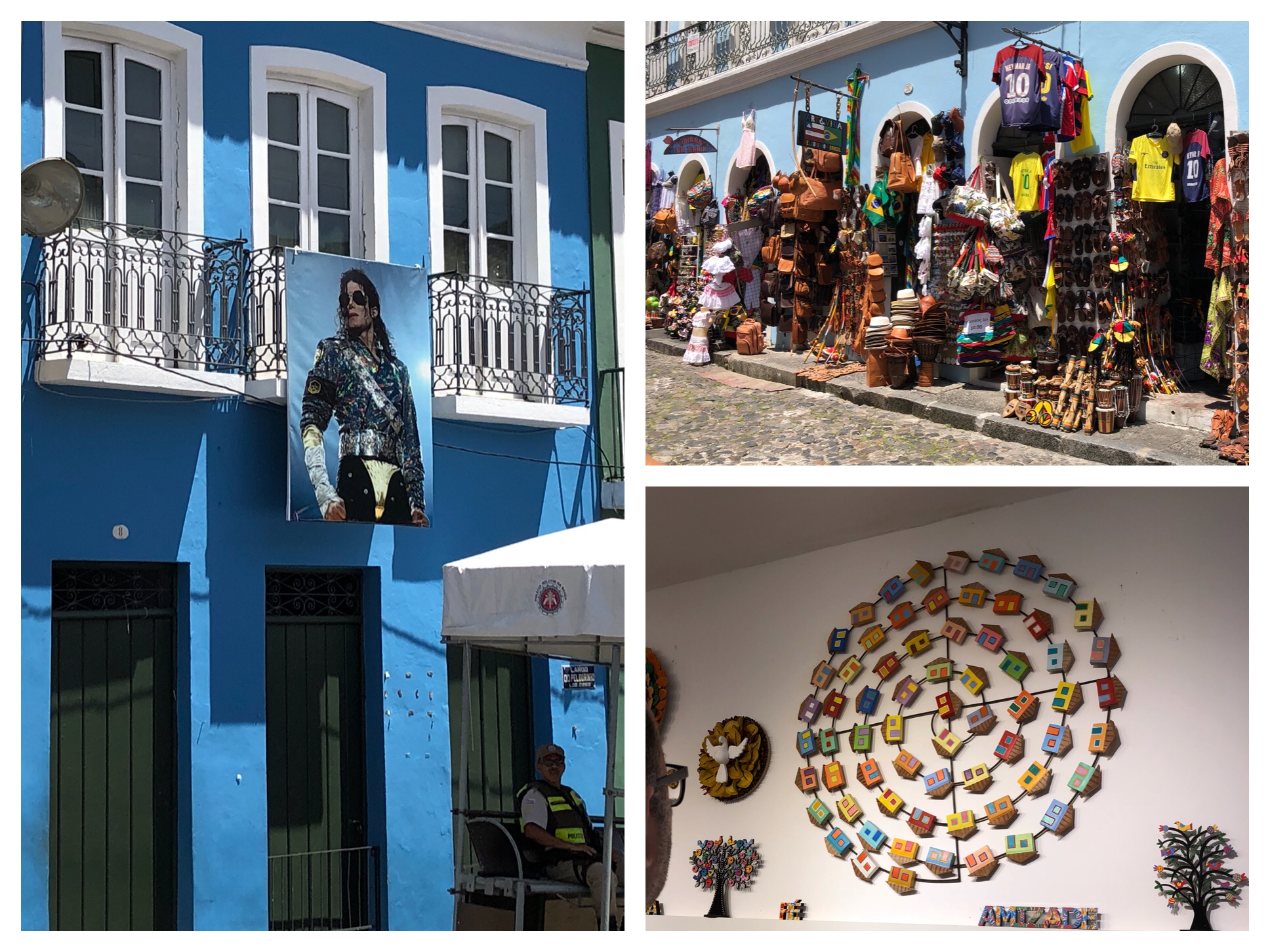
It was a short trip overnight to Búzios from Rio. We didn’t have an excursion planned for today so we slept in late, had a pleasant breakfast in the dinning room, and then headed into town.
Búzios is definitely a party type of town. With 23 separate beaches and a bar and hotel every block, it’s the “in” place to be. The town was put on the map by film star Bridget Bardot (the town placed a sculpture of her on the beachfront). Ever since Bridget first “hid” here with her Brazilian boyfriend in 1964, a litany of world stars, from Mick Jagger to Madonna, have followed her path. None left quite the impression Bardot did. Her declaration of love for the tiny fishing village catapulted it into the global spotlight and led to its inevitable, albeit tastefully restrained, development as a hub of upmarket tourism. These days it is, rather unsurprisingly, known as Brazil’s St Tropez.

We walked through the quaint little streets, looked at the weird artwork, viewed another of the town’s landmarks, the sculpture called “Três Pescadores” of fishermen hauling in their nets, had a huge lunch at one of the restaurants, and just walked around and enjoyed the laid back vibe.
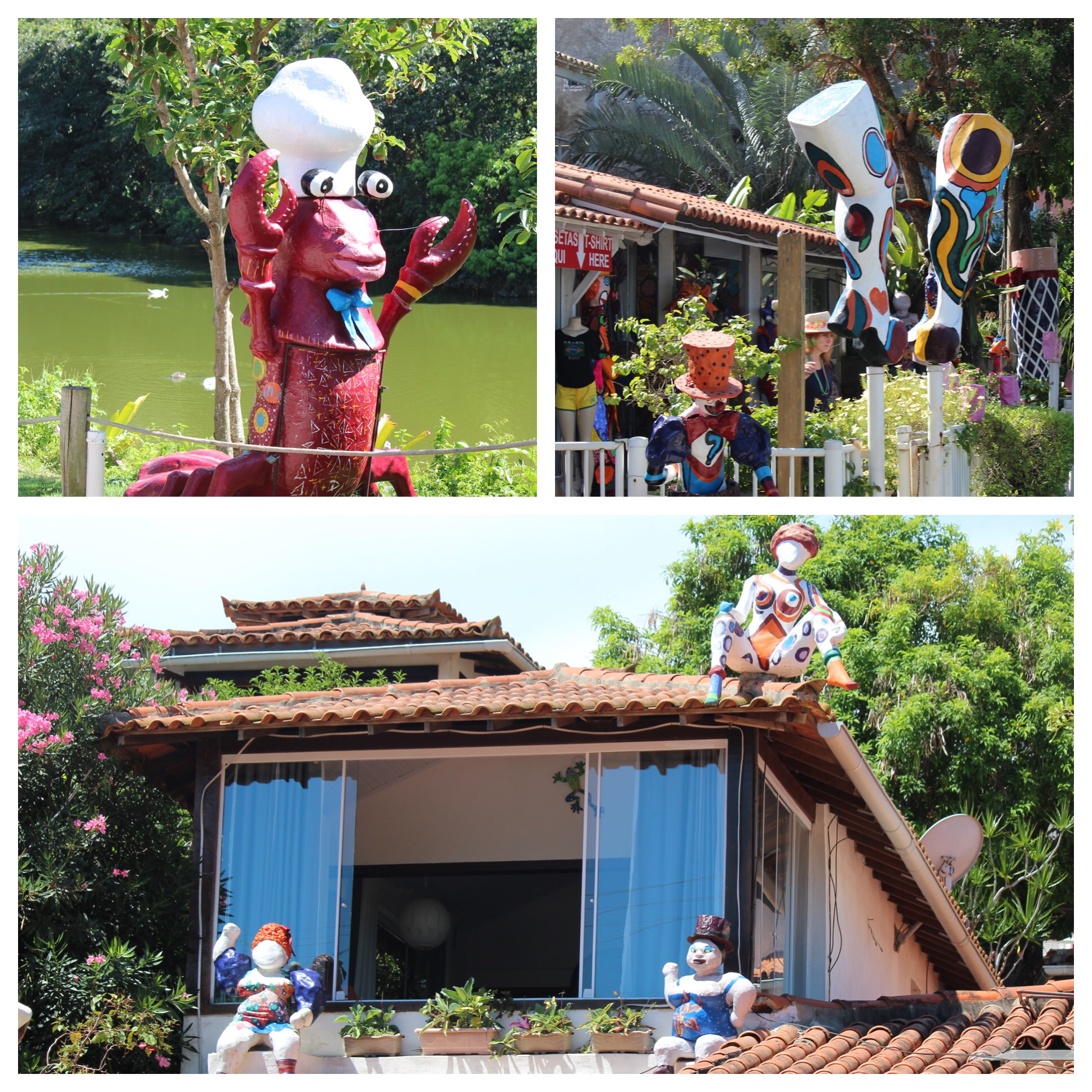
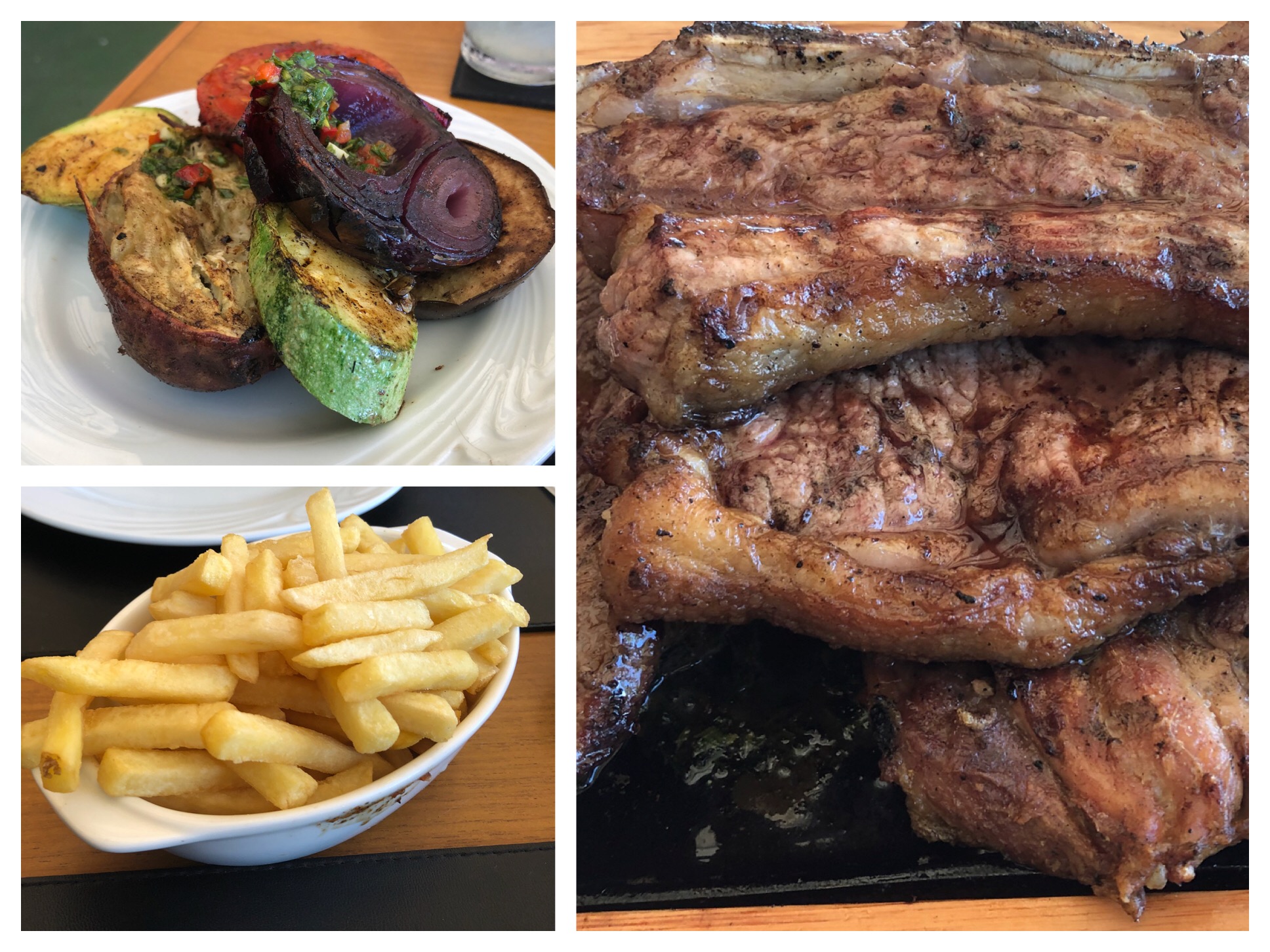
It was then back to the ship and off to our next stop Salvador de Bahia, Brazil.
This was the first port day on this trip where we did not have an excursion planned. From what we were told, there was a new museum (The Museum of Tomorrow) within walking distance along the pier. Ron also had a plan to find a new cover for his iPad and look for a Starbucks to see if they had any demitasse cups printed with the local cities such as we purchased on the Grand World Voyage last year. Leaving the port, we saw a huge mural (registered in the Guinness Book as the largest mural) that was completed before the Summer Olympics in Brazil in 2016.

The Museum of Tomorrow is a huge structure that looks like a spaceship. The museum describes the effect man is having on the world and what sorts of decisions we need to make in the future. Basically it is a positive message and the presentations inside the museum are phenomenal. My favorite stops were a digital camera that takes your image and displays it in a cubist sort of image. I didn’t actually get the point of the display since it was all in Portuguese. There was another demonstration that everything is in constant motion using two gauzy pieces of cloth being lifted by jets of air in a random and beautiful way.




As you left the building out the back, you saw a beautiful star sculpture that represented the future. This museum was well worth the visit.

We headed into town which seemed like the business district during lunch time. Many business people were walking around, many seemed to be eating ice cream. We also found streets with tiny booths selling electronic accessories and in a slightly larger shop Ron found his iPad cover. Score one. We did find a Starbucks (as well as several McDonald’s and Subway restaurants). Unfortunately, the small cups they were selling said Brasil and São Paulo instead of Brasil and Rio de Janeiro, so we passed on that souvenir. We found several streets filled with street vendors, but we did not find anything to buy. Also by this time it was getting very hot and humid (90+ degrees).

We made it back to the ship in time to cool down before dinner. As we ate, the ship left port and Ron was able to capture one last great image of Christ the Redeemer on a mountain seemingly dwarfed by Sugarloaf Mountain. Goodbye, Rio.
